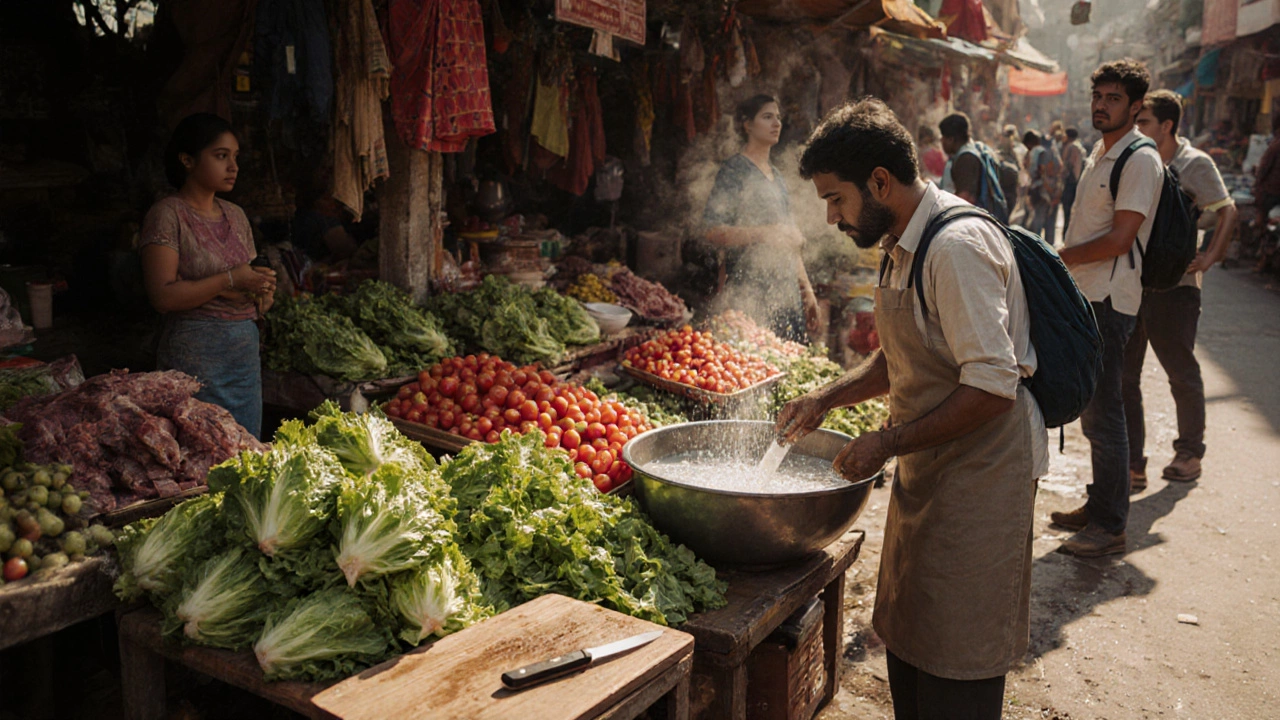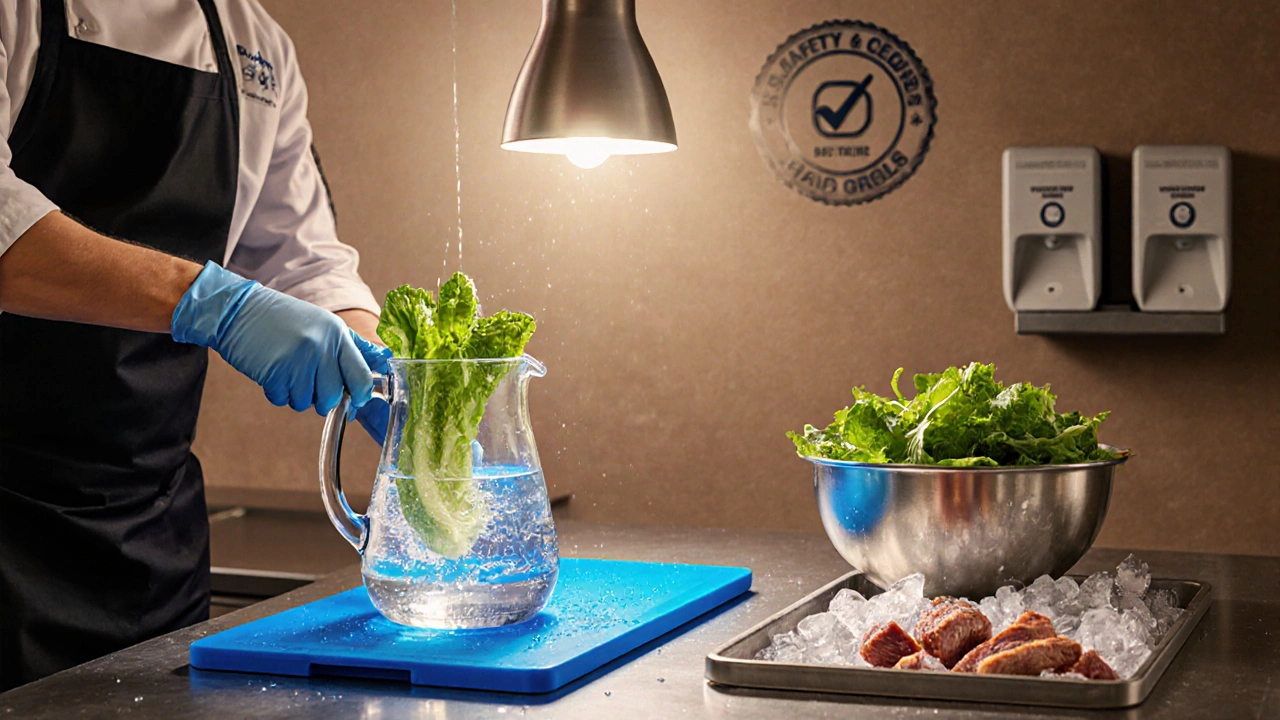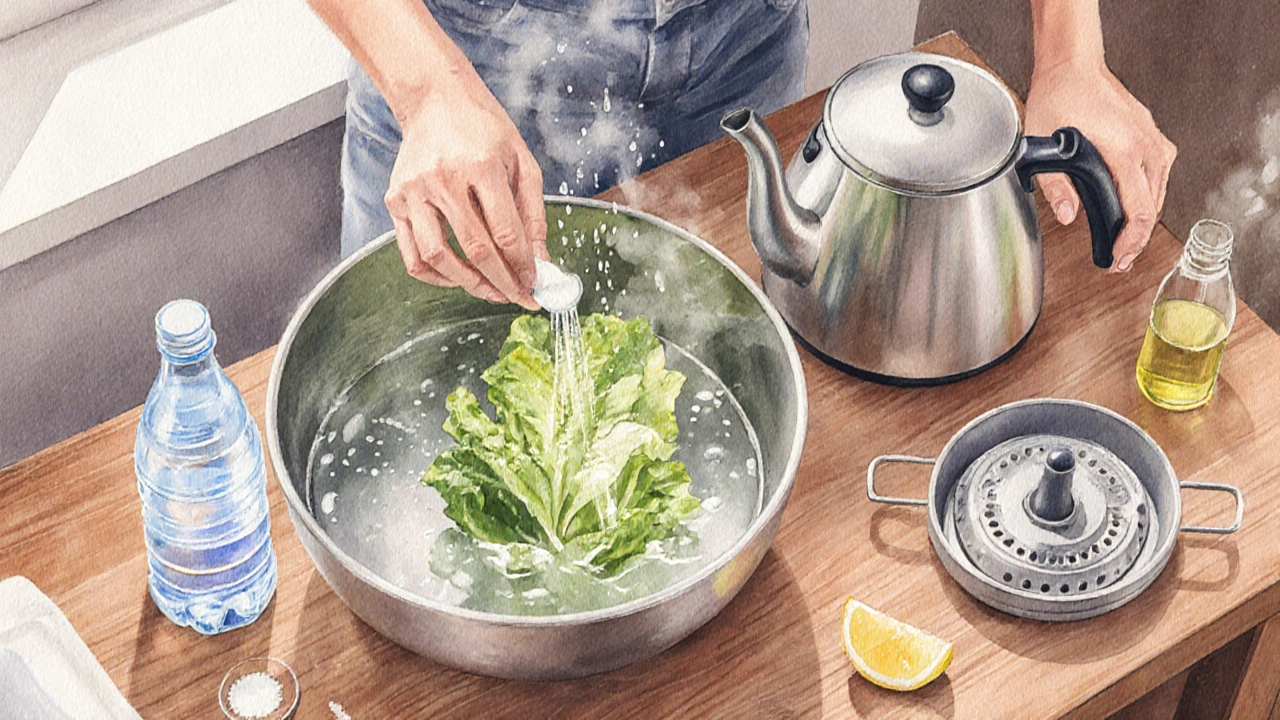Is Salad Safe to Eat in India? What Travelers Need to Know
 Oct, 12 2025
Oct, 12 2025
Traveling across India, you’ll see fresh greens on almost every street corner and in every restaurant menu. The big question is: salad safety - can you enjoy those crisp leaves without worrying about getting sick? This guide breaks down the real risks, shows where you’re most likely to find a safe bowl, and gives practical steps to protect yourself while still tasting the local vibe.
What Makes a Salad Risky in India?
Raw vegetables are a perfect breeding ground for three main troublemakers:
- E. coli is a bacteria that lives in animal waste and can cling to leafy greens if they’re washed with contaminated water.
- Salmonella spreads through improper handling and can survive on raw produce for days.
- Listeria thrives in cool, moist environments and can multiply in salads that sit out for long periods.
Beyond bacteria, two other issues bite tourists:
- Pesticide residue is common on farmed vegetables. In many parts of India, regulations on pesticide use are lax, and residues can linger even after a quick rinse.
- Water quality matters. Street vendors often wash greens with tap water that may not be fully chlorinated, introducing microbes right before the salad hits the plate.
How Salads Are Typically Prepared Across India
Understanding the local workflow helps you spot red flags. In most Indian eateries:
- Greens are bought in bulk from local markets, where they’re displayed on the floor or in open containers.
- Vendors wash the veggies in a large basin of water that’s reused throughout the day.
- Ingredients are chopped on the same board used for raw meat or fish, unless the stall is dedicated to vegetarian fare.
- The finished salad sits at ambient temperature for the duration of service - sometimes up to four hours.
This practice works fine when the water source is pristine and the staff follows strict hygiene, but many small stalls lack those conditions.
What Defines a Safe Salad?
Safety isn’t a magic label; it’s a set of observable cues. When you’re scanning a menu or a street cart, look for these signs:
- Clean water source - a visible tap with treated water or a sealed bottled water container used for rinsing.
- Separate cutting board for vegetables, ideally a color‑coded plastic board that’s never touched raw meat.
- Freshly washed greens - you should see a bowl of greens being rinsed right before service.
- Temperate serving - salads kept on ice or served immediately reduce bacterial growth.
- Visible hygiene certifications such as the FSSAI ‘Safe Food’ stamp for restaurants.

Practical Tips for Travelers Who Want to Eat Salad
Even with the best research, you can’t control every factor on the road. Here’s a checklist you can carry in your pocket:
- Choose establishments that cook salads on the spot rather than pre‑made batches.
- Prefer hotels, upscale restaurants, or chain cafés that advertise “freshly prepared” salads.
- If you’re at a street stall, ask to see the water they use - clear, sealed bottles are a good sign.
- Look for a glass of lemon or vinegar on the side; a quick acidic rinse can kill many surface microbes.
- Carry a small sachet of food‑grade bleach (1% solution) and a spray bottle. A quick spray‑and‑rinse with a few seconds of contact time can make a big difference.
- When in doubt, opt for cooked vegetables. Steamed carrot or sautéed spinach carries far less risk than raw lettuce.
DIY Safe Salad - How to Make It at Your Hotel or Guesthouse
If you have a kitchen or even just a sink, you can take control:
- Buy whole heads of lettuce, cucumber, and tomatoes from a reputable supermarket rather than a roadside market.
- Fill a large bowl with boiled water that’s cooled to warm‑room temperature. This kills any lingering parasites on the surface.
- Submerge the greens for 30seconds, then gently agitate.
- Rinse thoroughly with bottled or filtered water.
- Optional: add a splash of white vinegar (1part vinegar to 3parts water) and let the leaves sit for another minute - the acidity reduces bacterial load.
- Dry the vegetables with a clean kitchen towel or a salad spinner. Moist leaves encourage bacterial growth.
- Dress with olive oil, lemon juice, and a pinch of salt - keep the dressing simple to avoid cross‑contamination.
This method costs just a few rupees and gives you confidence that the salad you’re eating is truly clean.

Quick Reference Table - Safe vs. Risky Salad Sources
| Source | Risk Level | Why It’s Safe / Why It’s Risky | Tip to Improve Safety |
|---|---|---|---|
| Five‑star hotel salad bar | Low | Uses filtered water, daily prep, sealed containers. | Ask if greens are washed on‑site. |
| Chain café (e.g., Café Coffee Day) | Medium‑Low | Standardized processes, but sometimes pre‑packaged. | Request a fresh batch. |
| Local vegetarian restaurant | Medium | Often uses local market produce; water quality varies. | Check for visible washing station. |
| Street vendor “chaat” stall | High | Reusable water, open containers, no temperature control. | Skip raw salads; opt for cooked items. |
| Farmers market stall | Variable | Freshness high but hygiene depends on seller. | Wash yourself with bottled water before eating. |
Mini FAQ - Your Most Common Concerns Answered
Frequently Asked Questions
Can I get food poisoning from a salad in India?
Yes, if the greens are washed with contaminated water or handled on dirty surfaces, bacteria like E. coli or Salmonella can cause symptoms ranging from mild stomach upset to severe dehydration.
Is it safer to eat cooked vegetables than raw salads?
Cooked vegetables are generally safer because heat kills most pathogens. If you’re unsure about the hygiene of a place, swapping a raw salad for a lightly sautéed or steamed veggie dish is a smart move.
Do bottled water and lemon juice make a salad safe?
Using bottled water to rinse greens dramatically reduces the chance of water‑borne bacteria. Adding a splash of lemon or vinegar creates an acidic environment that further suppresses microbial growth, though it’s not a substitute for proper washing.
How can I tell if a restaurant follows good hygiene?
Look for visible certifications (FSSAI "Safe Food" stamp), clean chopping boards, hand‑washing stations, and staff wearing gloves. A clutter‑free prep area and fresh‑made salads are good indicators.
What should I do if I feel sick after eating a salad?
Stay hydrated with oral rehydration salts, avoid solid food until symptoms subside, and seek medical attention if you experience high fever, persistent vomiting, or bloody diarrhea. Mention the recent travel and food history to the doctor.
Bottom line: salads in India can be delicious and safe, but they require a bit of vigilance. By picking the right venues, washing greens properly, and knowing the warning signs, you’ll enjoy fresh, crisp bites without the dread of a stomach upset.
